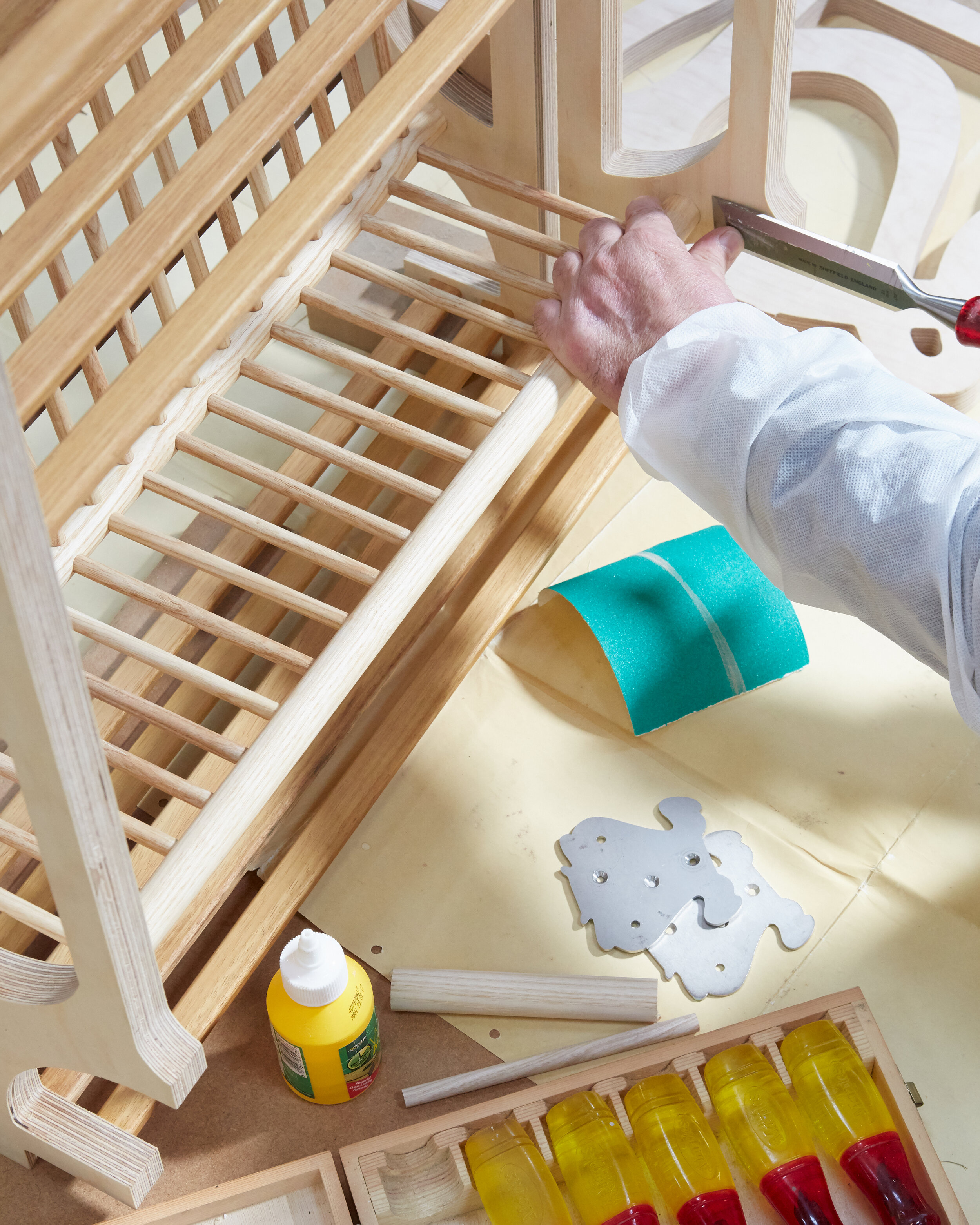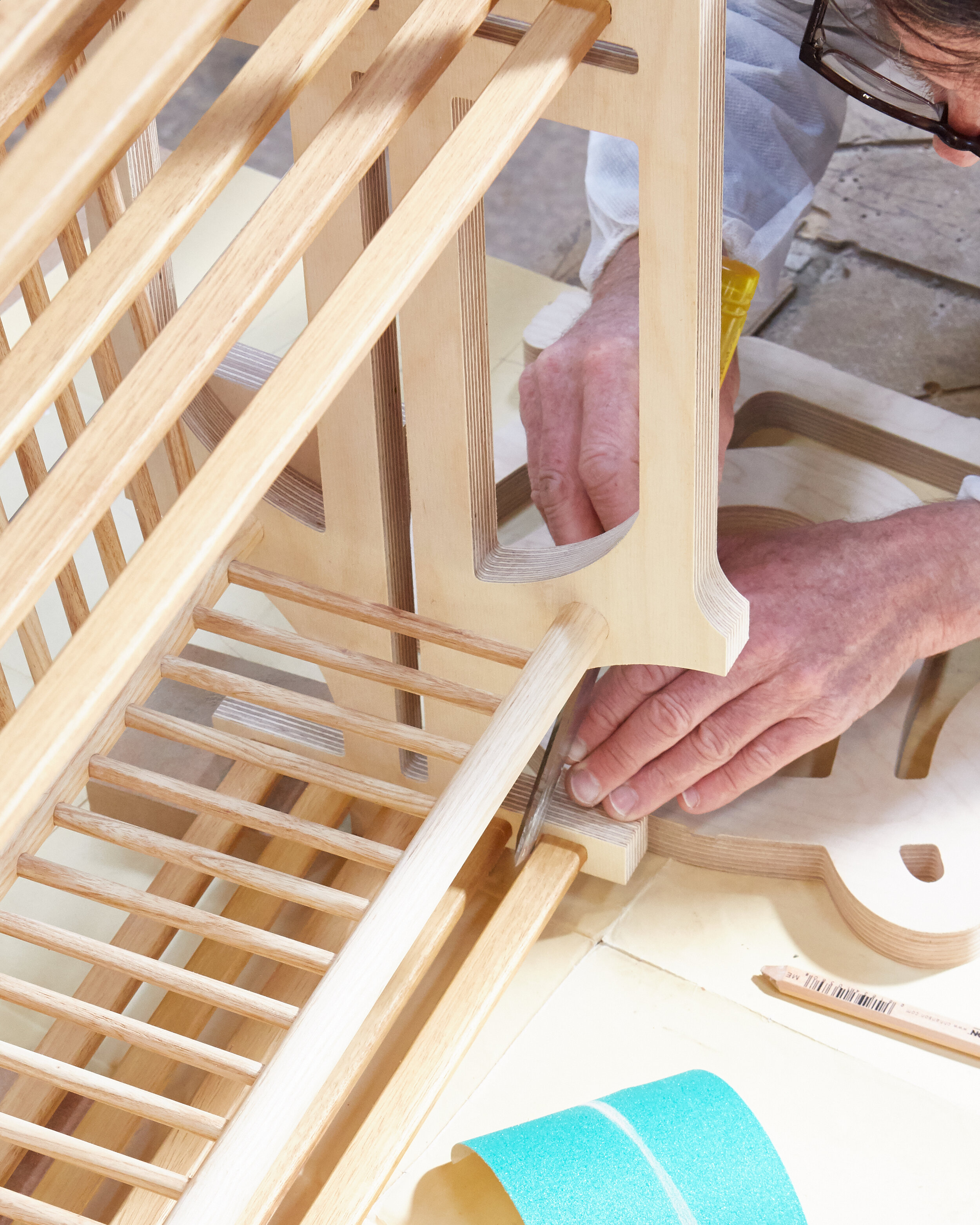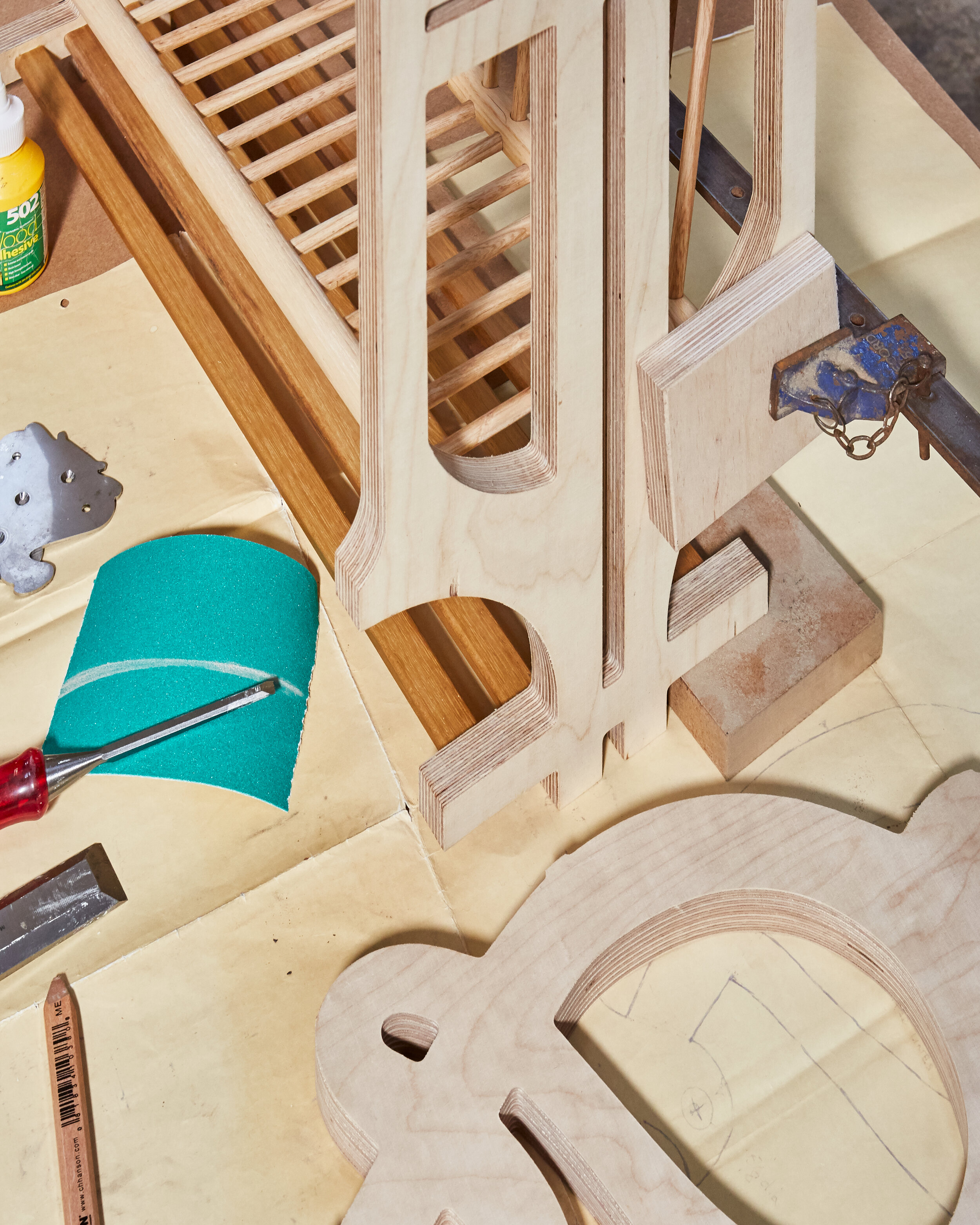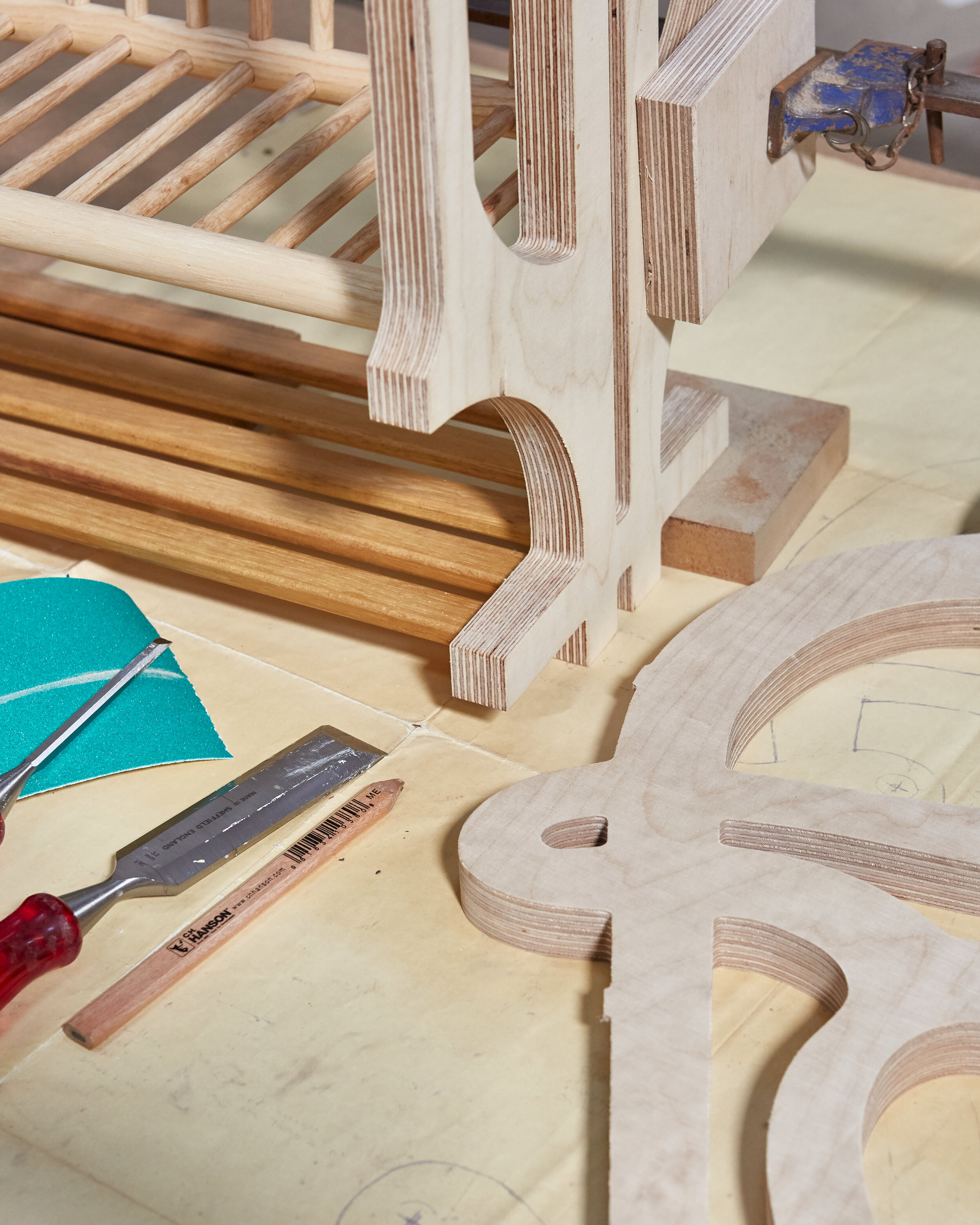PLATE RACKS & BOOK SHELVES
STORY SINCE THE ‘70’S
Jeremy Fry and a French architect Didier Bertrand designed and made the original art nouveau plate rack in the early 70’s for his own personal use. Following clamorous approval from all quarters, Jeremy embarked on a production run of a dozen plate racks from his workshop in Bath, Somerset. These were duly given away to friends and family.
Fast forward 20 years and his son Cosmo recommenced production of the plate racks, firstly in Somerset and latterly in Vietnam. These racks were sold in 1992 through Cath Kidston’s first London shop. In the interim, Cosmo commissioned Carl Toms (stage, film, opera and ballet designer) to design two alternative complementary styles. Tom’s gothic revival and arts and craft designs now make up the plate rack family collection.
Happily, it is now more cost effective and offers better quality controls to have the plate racks made in the UK, embracing more modern methods of fabrication and ensuring a millimeter degree of accuracy. Minor adjustments have been made to the original ‘70’s version, most notably, widening the access to the vertical drying section, to accommodate the larger plates of today. The plate racks have now come home after a journey of some 45 years and all the components are machined and assembled in our workshops in Bath, Somerset.
The book shelves are a natural progression and adaptation of the plate racks. Where as a plate rack will work in either the kitchen or pantry, the book shelves will work in any room in your home!
*****
“I’m so pleased to see these plate racks back in production. I love the two new styles and introduction of Formica. I have such great memories of selling them in my first Cath Kidston Shop and have travelled with my original one from house to house. They are a design classic that will last forever and never go out of fashion” CATH KIDSTON - MAY 2019
Plate rack nostalgia: Cath Kidston shop note 1993. Carl Toms letter referencing plate rack design. Early line drawing and photograph of plate rack fabricated in Vietnam dated 1991. Prototype drawing by Jeremy Fry, 1974
CRAFTSMANSHIP
The same three materials still compliment the fabrication of the plate rack today; notably, Plywood, Iroko and Ash.
Birch plywood cheeks; mention of plywood prompts a throwback to the 50’s and 60’s era of contemporary design. It has been chosen for its enduring strength, lightness and flexibility. There is no alternative sheet material that enables such decorative detail and at the same time guarantees stability.
Iroko slats and ash dowel; Iroko is a hardwood from West Africa and often mistaken for teak, white ash from North America has been chosen for it’s lightness in colour and interesting grain, both are well suited for their density, durability and resistance to moisture. In addition, both are stable woods and neither prone to twisting or warping across a long length.
Assembly of the plate racks involves glued pressure joints throughout and there is no requirement for screwed joints.




